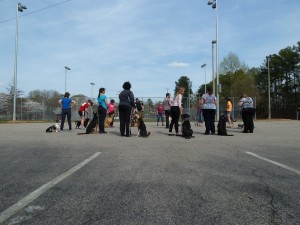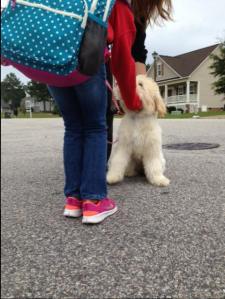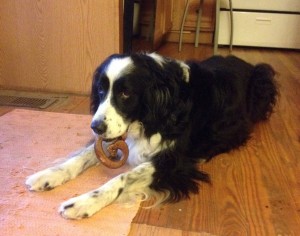1. Stay calm and relaxed. Your energy flows through the leash to your dog. If you begin a walk stressed out and tense, your dog will be on the lookout for something to go after. Maintain a calm attitude from start to finish on your walk, showing your dog there is nothing to worry about.
2. Keep the leash loose. Walking with a tight leash tenses up your dog. If you struggle with loose leash walking, we go over this in our Home and Public Manners class. A loose leash is vital for a relaxed walk!
3. Stay between your dog and the distraction. If someone is walking toward you with a dog, instead of letting the dogs meet as they pass, move your dog to the opposite side so that you are in the middle. This simple act tells him that you are taking care of everything.
4. If your dog is out of control, move toward him and walk away. Then come back and try again. In doing this, you are telling him that every time he barks, you start over.
5. Claim your space. If your dog is jumping all over you in the house, he picks up on your weaknesses and thinks he needs to protect you in public. Instead of backing away from your dog when he jumps on you (essentially taking your space from you), stand tall and walk towards him as you see him moving in your direction. Claim your space and show your dog that you can stand up for yourself so he does not need to.
6. Teach your dog to sit to be released through a doorway. Waiting to come through not only builds your dog’s attention on you, it also shows him that you are going to take care of him on either side of the door. Whoever exits first is the one that gets to scope things out, so let him know that this is your job.
7. Sometimes professional help can be necessary, especially if you do not feel comfortable or need extra guidance. We offer a Feisty Fido class that has helped many dogs overcome their issues and learn to walk with better manners in public. Talk to a trainer about what is best for your dog.
Kersti Nieto
Certified Dog Trainer
K9 Solutions LLC
nck9solutions.com




